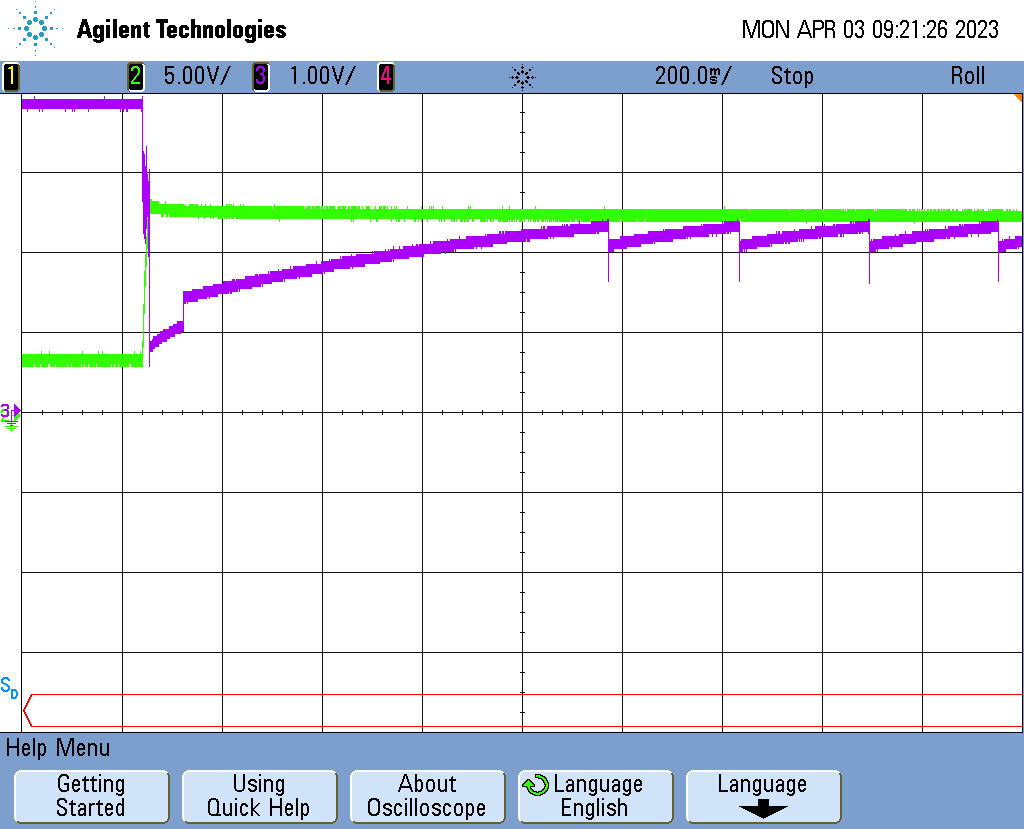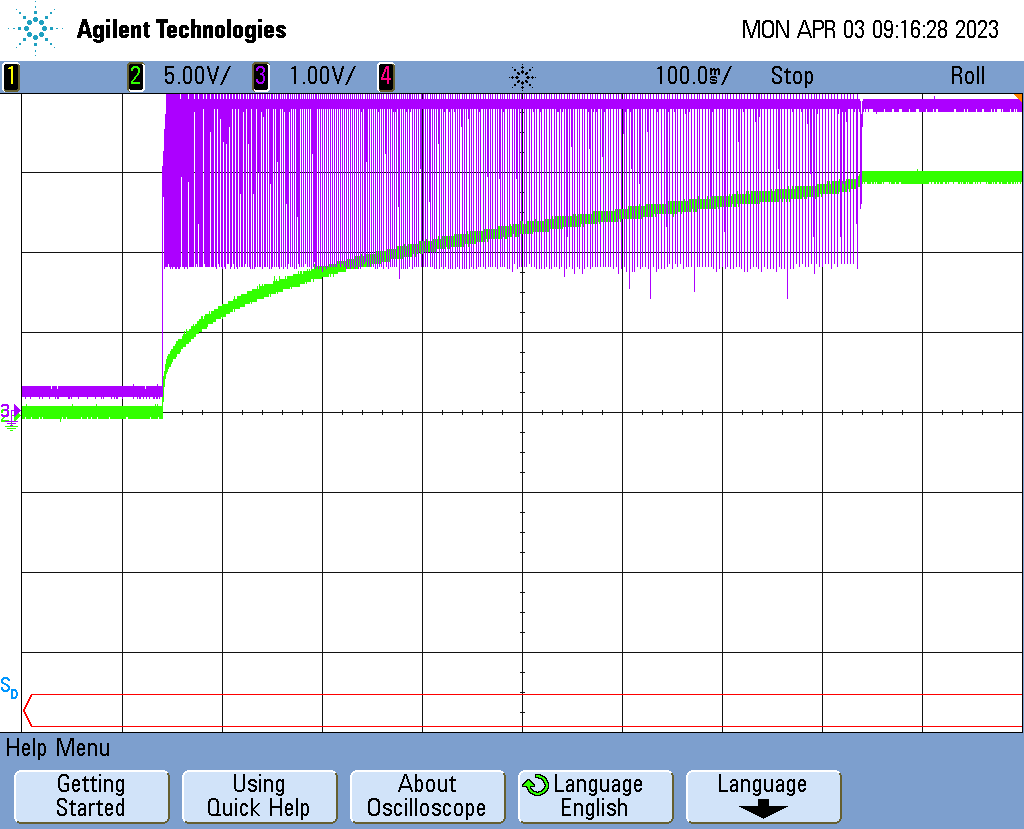Other Parts Discussed in Thread: LMR62014, , TPS61046
Hello,
I currently use a TPS61288EVM-064 in standard configuration and an output voltage of 15V. I connected 4700uF directly to the output of the Booster. As soon the voltage in the capacitor has reached 15V, I turn off the booster and use the energy in the capacitor to control a solenoid over a h-bridge.
It works perfectly fine BUT to charge the 4700uF capacitor it takes about 3.5 seconds which is too much for my application. In theory it should take much less time. I guess this is due to the PFM feature?
Is there a way I can speed that up?
If not I will go for a simple switcher like the LMR62014 but it would be much more convenient to use the TPS61288 which is already on our device.
Thanks for your help and kind regards,
Manuel




